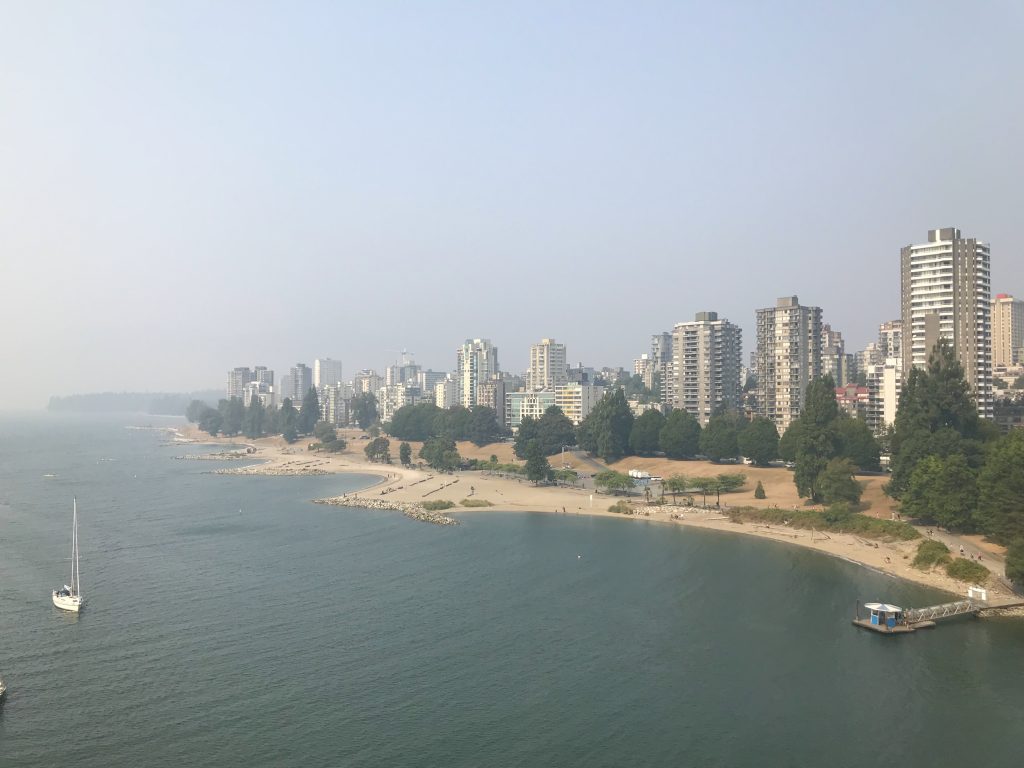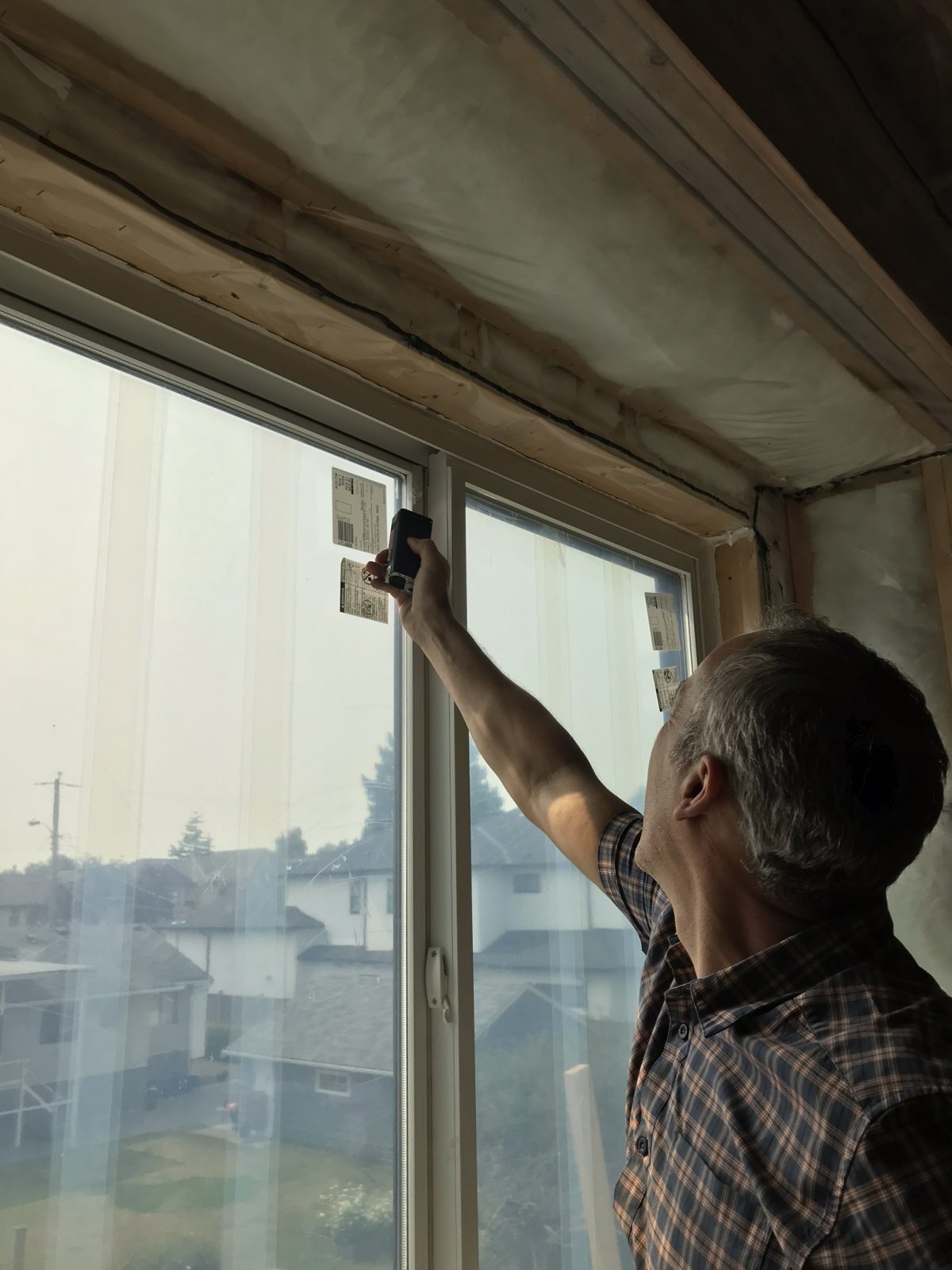
Hard not to notice the thick smoke that has choked our sky for the past weeks. An Air Quality Advisory has been issued for most of BC including Metro Vancouver, due to concentrations of fine particulate matter. All those small floating particles are harmful to our lungs and hearts. Chronic exposure to those particles year-in and year-out can lead to long-term health issues. Authorities recommend to stay indoor and to limit outdoor recreation time. But, are we really safer indoors? Well, it depends on the airtightness of the building and the quality of the ventilation system used.
What is Airtightness?
An airtight house is one that has been so carefully built that no (or very little) air leaks in and out. Air leakage occurs due to deficiencies in the homes air barrier. There are many factors which can cause those breaches such as poor preliminary build design, poor craftsmanship, or low quality, improper materials. Extremely airtight houses provide a healthier indoor environment and comfort. Heat losses are reduced but most importantly (especially during wildfire season), outdoor contaminants like smoke particles, stay out of the house! The Airtightness of a house can be measured in *ACH at a certain pressure. (ACH = Air Changes per Hour). This is a measure of how many times the entire volume of air in the home gets exchanged in one hour, when we depressurize the house. This simulates a 30-40km/h wind on all sides of the home. The lower the ACH the better.
(*ACH @ 50Pa is the metric the industry uses measure the air tightness in residential construction)
How a good ventilation system will help
It is crucial to opt in for a good ventilation system in order to supply the house with adequate fresh air. We strongly recommend an HRV (Heat Recovery Ventilator). The HRV is a balanced ventilation system which exhausts warm stale air, while also providing fresh air to the home. The heat from the stale outgoing air is used to warm up the fresh air coming from outside, hence the name “heat recovery ventilator”. Of course, the fresh air entering the home is filtered and using the correct filter is important. Air filters are rated in MERV (Minimum Efficiency Reporting Value). Higher MERV ratings capture more than 90% of the large particles and even the smallest particles (<0.3 microns) from the incoming air and contribute to a healthier indoor air quality. Proper duct design and equipment installation is extremely important when installing an HRV. Make sure to hire a TECA qualified ventilation contractor, when building your home.
How to build Airtight?
It is important to think about airtightness at the design stage alongside your air barrier strategy. For example, square houses have less corners and are easier to detail for a continuous air barrier. Choosing high quality windows and a proper air barrier is crucial. The choice between interior and exterior air barriers can also greatly affect the design down the road. A few considerations during your design include:
- At the building stage, nails and screws leave puncture holes all around the house. Those are negligible compared to openings needed for pipes, ducting, electrical conduits and cables. All of those cavities have an impact on the global airtightness of the house and have to be properly sealed. A site supervisor should also make sure all contractors keep airtightness goals in mind when performing their work.
- Before the drywall is installed, testing the house is essential. A Blower Door test measures the ACH, but most importantly it identifies and targets any deficiencies in the air barrier. You can walk around the house during the test and see where the drafts are coming in! We like to use an Infrared Camera or smoke puffer to help identify air leakage issues.
- Air tightness is not only about reducing the amount of unfiltered air in a home, but also about reducing condensation and moisture problems in the home. A properly built air tight house, with sufficient ventilation, will have a longer lifespan. Air tightness leads to a more comfortable, durable, healthy home.
What role does the Energy Advisor play?
The Energy Advisor assists builders and homeowners along all stages of the building process. At Capital Home Energy, we provide pre-permit Energy Modeling which helps identify strategies to optimize the home’s energy usage, air tightness, and overall thermal comfort of the house.
We also provide Blower Door air tightness tests at key stages of the construction. The mid-construction blower door test, or pre-drywall test, is the key to success when building any airtight home. It offers an opportunity for the builders to improve an already air tight design and address any deficiencies in the air barrier.
The Final Evaluation ties the whole process together. We measure the home’s final ACH (ACH = air changes per hour) and energy consumption and issue an overall EnerGuide Rating score. This rating measures a home’s overall annual energy consumption and is used across Canada to compare a home’s performance.
The final air tightness score will highlight how air tight a home is. A typical new construction in the City of Vancouver achieves 3.5 ACH, while the most air tight designs often score lower than 1 ACH. The lowest score we’ve seen is 0.24 ACH, for a Passive House design.
Contact us to start on your next Airtight project.

